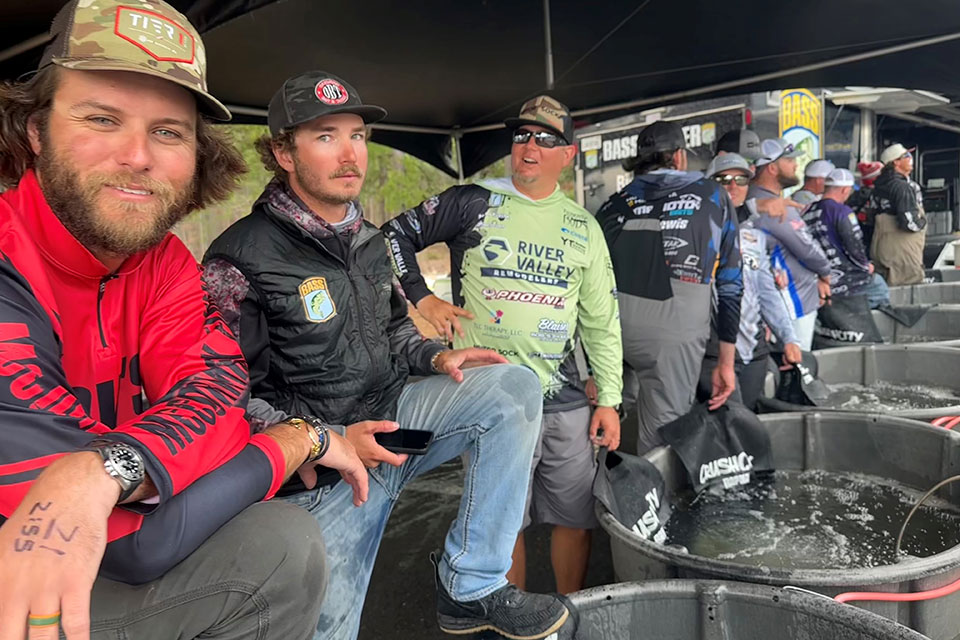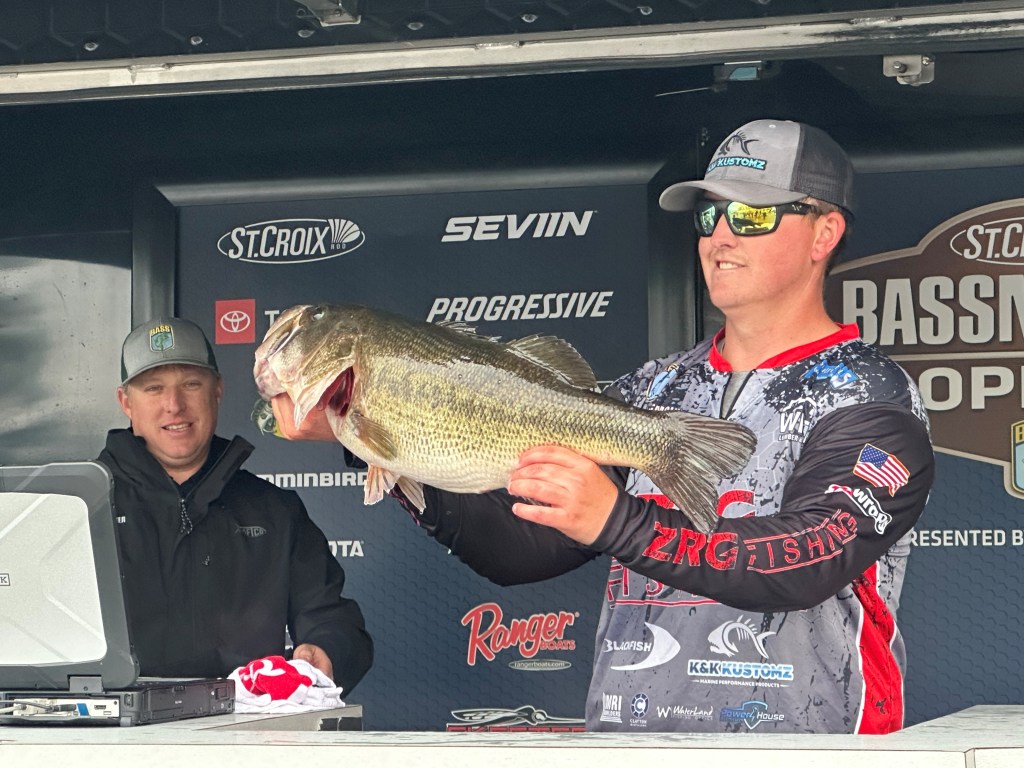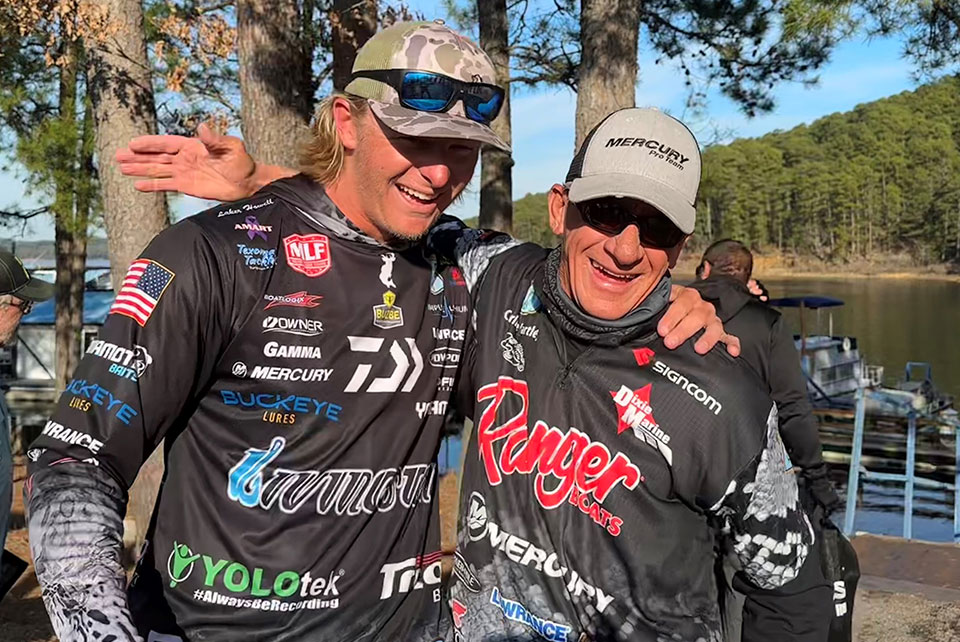
Despite some twists and turns, expect even more nail-biting among those vying to fish the Bassmaster Elite Series.
Winners of St. Croix Bassmaster Opens will still get Classic berths, and 10 anglers will advance to the Elites, but the Elite Qualifier (EQ) process has been altered, which stunned Bassmaster LIVE’s Ronnie Moore.
Moore, who competed in Bassmaster college events and maintains a comprehensive pulse on the tournament scene, said the nine-event format the past two years created impressive graduates.
“I was surprised to see format change because the nine events, commitment-wise and diversity of schedule, was really working well,” he said. “It made for great classes of Elite rookies coming out.”
This year’s heralded nine rookies have a tough act to follow. Two from the inaugural EQ class won Elite titles in 2024 and all reached the Bassmaster Classic through the point standings. While the altered format should still produce Elite-ready anglers, Moore thinks the two-tiered pathway will create more intense competition.
“I see how expensive things are getting, tough scheduling around other events, so committing to all nine is difficult,” he said. “Now we have two divisions, four events in each. You finish in the top 50 in points in either division and it qualifies you for the three EQ events in fall.”
Another twist is Elites can enter as well as the second- and third-place finishers in the B.A.S.S. Nation Championship. With points back to zero, the 10 atop the standings after the three EQs advance to the Elites.
“I can imagine every Elite who misses the Classic will probably sign up,” Moore said. “And those who don’t requalify in points, they get the chance to steal one of those nine spots. And they’ll be some who just want to fish more events.
“So with the 100 Opens anglers, maybe there will be another 60 Elite Series anglers in the fall tournaments. Those three tournaments will undoubtedly be the strongest fields we’ve ever seen assembled.”
The EQ venues, announced Tuesday, are some familiar waters for Bassmaster pros. Lake Champlain opens the EQs Sept. 18-20, and Lake Pickwick is Oct. 2-4. The 10 Elites Series berths will be decided on Lake Okeechobee, Nov, 13-15.

“I think that’s such an interesting time of year, September, October, November,” Moore said.
Division 1 launches this week at Clarks Hill Reservoir, where more than 150 have entered for a blueback herring battle under an arctic blast. Things should warm up for April’s second Open event on the Tombigbee River out of Columbus, Miss. Then it’s another two months before the Upper Chesapeake in late July, and the finale is the following week at the St. Lawrence River.
“The Tombigbee and Upper Chesapeake, those are the two big question marks for people,” Moore said. “We haven’t been to Tombigbee since Mark Davis won back in 2004, then you turn around and go to the Upper Chesapeake. Even if you’ve been there, it’s a wild-card kind of place.”
The Division 2 slate has more renowned fisheries, perhaps why it’s drawn an almost full complement of 230 anglers. It kicks off Feb. 13 at Sam Rayburn then reconvenes the first week in March at Kentucky/Barkley Lakes. In early April, the field hits Lake Norfork before a three-month wait for Minnesota’s Leech Lake in mid-August.
Edtior’s Note: Click here to see the full tournament schedule
Another turn this year, Opens pros won’t have co-anglers in their boats, a move the Elites made in 2009. The series will also follow Elite rules of allowing only one transducer and 55 inches of screen.
“Anglers wanted fairness in fishing alone vs. having a co-angler when it comes to making the Elites,” Moore said. “Changes in the B.A.S.S. Nation hopefully open up more opportunity for regional anglers and co-anglers.”
Moore compared the uniform equipment move to baseball’s minor leagues using wood bats instead of metal so to more closely emulate the major leagues.
“That’s also why we wanted electronics rules the same for the Elites and the Opens,” he said.
Breaking down the fields, Moore said it’s difficult to predict which 10 anglers will put it all together and advance. In Division 1, there are at least a dozen former Elites, and twice as many signed up for Division 2. A number of anglers opted to fish both divisions to maximize their chances.
“It’s going to be very tricky when you have a packed Division 2 with the lineup of Rayburn, Kentucky, Norfork and Leech, four phenomenal fisheries,” Moore said. “I don’t care who you are, a top 50 is not guaranteed.”
Moore said he does think the larger fields in Division 2 allows for perhaps one slip up. Many of the nine 2025 Elite rookies overcame a poor finish in the 2024 EQs, but Division 1 might not be as forgiving.
“You can bomb in Sam Rayburn division with a fuller field, but I don’t think you can slip in Division I,” he said. “I’m liking guys who fish both divisions, which also gives them four more opportunities to make the Classic.
“It really doesn’t matter where an angler finishes, you just have to make the Top 50. A guy could sneak in at 49th in his division, and he can still make the Elites.”

Before last year’s EQs, Moore rattled off a couple dozen anglers he expected to advance, and six of them made it. MLF stalwarts Cody Meyer and Dakota Ebare certainly weren’t longshots, but it was uncertain how others would perform. Moore said he anticipated the pedigrees of Easton Fothergill, Tucker Smith, Emil Wagner and Beau Browning to shine, and he wasn’t surprised when Georgia’s Paul Marks, Alabama’s Andrew Loberg and Canada’s Evan Kung filled out the Elite nine.
“Evan Kung struggled his first year then made it,” he said. “It just shows how much a guy can learn when he leaves home and fishes all across the country.
“When you see some of the guys like Andrew Loberg be in the race after several events, you got a feeling he might continue to do well. If you survive through a couple events, you can see who’s the real deal.”
With the format changes, Moore said he’d certainly like the chances of former Elites pros Randall Tharp, Ish Monroe, Brett Hite, Stephen Browning, Cliff Crochet and Mike McClelland if they reached the fall EQs tournaments.
“They get out of their division and advance those last three events, that’s the time of year they could excel,” he said.
There are also several younger anglers who Moore thinks could piece it all together. Laker Howell, son of Classic champ and returning Elite Randy Howell, is back in the Opens, as is two-time Classic qualifier Tristan McCormick.
“I think Tristan has had a mind shift. He’s sort of fishing for wins instead of points,” Moore said. “Going into this another year stronger — he has one at home on Kentucky Lake — I think he’s going to have a breakthrough year.”
Another on his radar is Texan Jaden Parrish, who won two BLFs on Sam Rayburn but declined a BPT invitation to fish the Opens. Tyler Campbell of Martin, Ga., is also on Moore’s watch list.
“I call him Tucker Smith 2.0,” he said. “He’s an absolutely fantastic fisherman who came up second in so many big events. Tyler finally broke through and gets the Classic spot from the Team Championship. He’s fishing all eight Opens, and with one at Clarks Hill, he is absolutely one to keep any eye on.”
Several others to watch include Florida’s Aaron Yavorsky, the youngest to make a Classic; Australian Tommy Wood; and Matt Stefan of Wisconsin.
“Aaron learned a whole bunch and is now jumping in,” Moore said. “He elevated his game and has to grow up quick, like Trey McKinney.
“There’ll certainly be some guys we didn’t know of that will be discovered this year.”
Bassmaster LIVE with Ronnie Moore, Mike Suchan and guest angler Brandon Cobb will air the Clarks Hill event Saturday at 7 a.m. on Bassmaster.com.




